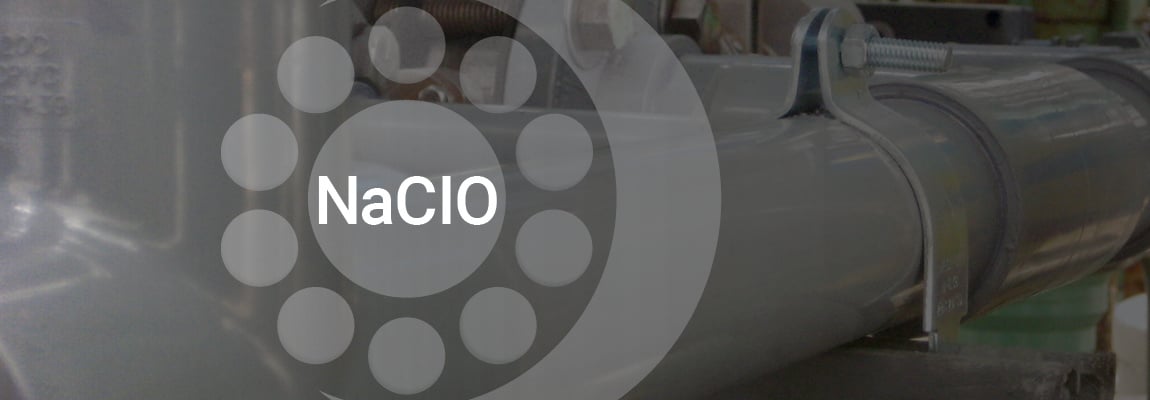Corzan® CPVC: The Reliable Choice for Sodium Hypochlorite
Treating wastewater from agriculture, sewage and industrial plants typically involves three stages—primary, secondary and advanced or tertiary treatment. After primary treatment and secondary treatment removes 85% of all organic matter, advanced, tertiary treatment, disinfects the water to further reduce or remove pathogens that can be harmful to humans, animals and plants.
In the 1930s, chlorine gas became commercially available and applications around the world began to take advantage of it as a disinfectant. Today, chlorine is the most widely used disinfectant in water and wastewater treatment processes, and the disinfectant of choice for nearly two-thirds of all drinking water facilities. Less expensive than many other chlorine-based treatment options, chlorine gas is known to deactivate most pathogenic microorganisms. However, it is a toxic respiratory irritant, can cause chlorine gas explosions and, in its wet form, is extremely corrosive.
Over recent decades, the growing concern over these health and safety concerns, especially in its gaseous state, has many plants considering other options. Chlorine-based disinfection alternatives like sodium hypochlorite (bleach) will tax different piping materials to varying degrees. When choosing chlorine alternatives, piping material must be up to the task.
Chlorine Gas and Its Alternatives
With the known hazards of chlorine gas—especially when stored in high volumes at a site—many facilities are turning to chlorine gas alternatives. Thankfully there are many alternatives available. Calcium hypochlorite, a chlorine gas derivative, is usually available as a solid. This makes it much more expensive than, for example, bleach, but it has benefits when stored long term. Bromine can be used for non-potable water treatment, though its material costs are high. Chlorine dioxide has risen in popularity because it doesn’t yield harmful byproducts when chlorine reacts with organic matter in water. Another alternative growing in popularity is sodium hypochlorite.
Known more commonly as liquid bleach, this light-yellow liquid is a chlorine derivative that is much safer than chlorine gas. Because it is produced and stored as a liquid, the potential danger of having high-pressure chlorine gas on site is eliminated. And, in this form, a lower concentration (5-15%) of chlorine is needed for water disinfection than with chlorine gas or calcium hypochlorite. Approximately one gallon of industrial strength sodium hypochlorite (10-12% concentration) is required to replace one pound of chlorine gas.
When sodium hypochlorite is introduced to water, the chemical reaction forms hypochlorous acid and a hypochlorite ion. When those combine, free available chlorine (FAC) forms and acts as the disinfectant. On-site generation (OSSG) is the most efficient and cost-effective way to use sodium hypochlorite—compared to bulk commercial transport and storage—is for the plant to generate it onsite.
Handling Sodium Hypochlorite and On-Site Generation Systems
Each of these available disinfectants for water and wastewater treatment can cause corrosion and damage to certain materials. Consider bleach, a common disinfectant. Whether transporting finished sodium hypochlorite for use or generating it on site, sodium hypochlorite will corrode most metals, including stainless steels, even in low concentrations.
Even plastics aren’t immune. Sodium hypochlorite will react with fumed silica in traditional polyvinyl chloride (PVC) cement used to solvent weld the material, making joints susceptible to leaks, and the material itself is susceptible to attack from the chlorine content of bleach. More resilient materials—like polyethylene (PE) and polyvinylidene fluoride (PVDF)—have a prohibitive up-front material cost.
Corzan® CPVC piping and tanks are ideal for storing and conveying many disinfectants and other chemicals. Corzan CPVC is not permeable to oxygen penetration in the same way as metals are, and Corzan CPVC has the chemical resistant properties necessary to handle highly chlorinated, corrosive chemicals. Because chlorinated polyvinyl chloride (CPVC) is molecularly protected by additional chlorine atoms, the CPVC resists chlorine degradation and gives plant owners and operators the confidence that their on-site bleach storage, transportation or on-site generation systems are completely reliable.
Sodium Hypochlorite is One of Corzan CPVC’s Top 10 Chemicals
Backed by more than 60 years of experience, Corzan CPVC has been formulated for durability and long-term system performance. It has also been tested against over 500 chemicals and compounds for suitability and sodium hypochlorite is just one of the top 10 commonly used chemicals that Corzan CPVC reliably handles when compared to metals and other plastics.

